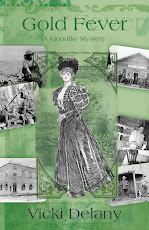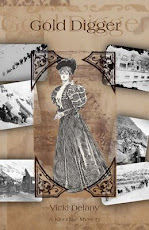I’m taking part in a blog hop. I was picked by Linda Wiken (aka Erika Chase)
who can be found at http://www.erikachase.com and http://mysterymavencdn.blogspot.ca/
To find out who I’m tagging, read on.
And now for the questions I have been given.
 |
| Eva Gates |
1)
What am I working on?
I am
now going through the editor’s edits for By Book or By Crook, the first in
the Lighthouse Library Mystery Series.
This is something very new for me.
A new cozy series! And I just
love it. The books are for Penguin
Obsidian, and they will be published under my pen name, Eva Gates. The series is set in a library in a lighthouse
on the Outer Banks of North Carolina. After writing 16 books with more serious
tones, all about human tragedy, broken families, injured war vets, and other
not-fun things, to write a book just for fun is a real joy.
Once
I finish the edits, then it’s on to the second book in the series. I have a three book contract.
By Book or By
Crook
will be released on February 3rd, 2014, and the second book (as yet
unnamed), in August.
2)
How does my work differ from others of its genre?
This
is a very cozy series, and it is written specifically for those readers who
love cozies. About the only way it differs from some others, is that I am trying
to keep it funny. If you are looking for
a good laugh, along with an interesting location, fun characters, and an
intelligent puzzle, please give it a try.
Oh, and the Outer Banks location. And the lighthouse!
3)
Why do I write what I do?
I
was ready for a change, and I was seriously considering giving up writing. This new project has given me a renewed love
of writing. I love the Constable Molly Smith books from Poisoned Pen, and they
are doing reasonably well. I really
loved writing standalone gothic thrillers, but the latest, More than Sorrow, pretty
much sunk without a trace. The offer
from Penguin (via my wonderful agent Kim Lionetti of Bookends) came at the
perfect time.
4)
How does my writing process work?
I am
a total creature of routine.
I get up every morning, seven days a week. I go to my main computer in my office, and
read e-mails, read the papers online, spend a bit of time on Facebook or
Twitter.
Then it’s time to start to write. I walk into the dining room and stand at my
Netbook computer which is on the half-wall between the kitchen and the dining
room and boot it up. (In the summer I
might sit outside on the deck) As I pass through the kitchen, I put one egg on
to boil.
I always write, standing up, on the Netbook. I read over everything I did the previous
day, doing a light edit as I go. I then
take my egg into the study and eat it while checking email.
Then back to the small computer for several writing hours,
usually finishing around one.
And that’s pretty much it.
I can’t write in small chunks. I can’t write as the spirit moves me.
I have a new web site for the Eva Gates books: www.lighthouselibrarymysteries.com. It’s still in development, but please have a
peek. You can also find Eva on Facebook at https://www.facebook.com/evagatesauthor
Plus, of course, the main web page
at www.vickidelany.com
I have tagged three of my favourite writers. They'll be answering the questions on their web pages next week.
1) Violette
Malan lives in southeastern Ontario with her husband. People tend to ask her
about the choreography of stripping – and she'll answer – but most of the time
she's the author of the Dhulyn and Parno novels, and the Mirror Lands novels, fantasies available
from DAW.
You'll find her on Facebook, on
Twitter, and check her website: www.violettemalan.com
2) 2) Prince Edward County's Janet Kellough is the author of The Thaddeus
Lewis Mysteries (Dundurn), history/mystery set in pre-Confederation Upper
Canada, featuring a steely-eyed and stout-hearted "saddlebag
preacher" as the hero.
https://www.facebook.com/pages/Thaddeus-Lewis-Mysteries-Janet-Kellough/190597476409?ref_type=bookmark
https://www.facebook.com/pages/Thaddeus-Lewis-Mysteries-Janet-Kellough/190597476409?ref_type=bookmark





















